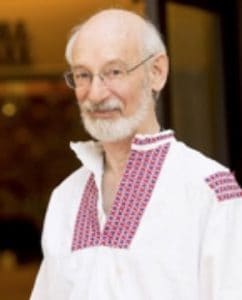Exploring the Landscape of the Pulse
The pulse is emblematic of Chinese medicine. It is a highly subjective measure that helps us to orient in helpful ways toward a patient’s problem and their strengths.
While most any practitioner would tell you the pulse is vitally important in accessing a patient’s condition, the ways in which we can approach and interact with the pulse are wide and varied.
In this conversation we explore the pulse and how we as practitioners can use it as an exploration not just of the patient, but of our own process as well.
In This Conversation We Discuss:
- Humans are not machines
- The draw of the pulse
- Footsteps of the Yellow Emperor is part history and part detective story
- The gift of a difficult situation
- Transfering information from one system to another
- Peter’s style of pulse diagnosis
- Constitutional Conditional Pulse Diagnosis
- Using multiple techniques
- Calibrating the pulse
- The importance of rapport with patients
 I started my professional career as an MD with a PhD in physiology before I ever was exposed to acupuncture, but from my first introduction to it in 1973, I have been enthralled by discovering that it is both an art and a science, with no limit on how much it encompasses. My first teachers were Korean, but I have subsequently studied with teachers of Chinese, Japanese, Indian and European backgrounds. Although their approaches each have unique aspects, I have found (discovered) a way to integrate them, so that rather than creating conflict, they illuminate each other. My most influential teachers: Kuon Dowon, Yoo Tae Woo and J.R. Worsley.
I started my professional career as an MD with a PhD in physiology before I ever was exposed to acupuncture, but from my first introduction to it in 1973, I have been enthralled by discovering that it is both an art and a science, with no limit on how much it encompasses. My first teachers were Korean, but I have subsequently studied with teachers of Chinese, Japanese, Indian and European backgrounds. Although their approaches each have unique aspects, I have found (discovered) a way to integrate them, so that rather than creating conflict, they illuminate each other. My most influential teachers: Kuon Dowon, Yoo Tae Woo and J.R. Worsley.
My perspective has been: find the best teachers, study the classics (in Chinese if possible) and always learn from your experiences, be they positive or negative. In this way I have created my own style of practice, which I call Constitutional Conditional Acupuncture (CCA). It is mainly a pulse guided method of treatment selection, but I never discount the importance of establishing a strong practitioner-patient relationship, as that is as powerful as needles are in creating successful outcomes.
My most gratifying experiences have occurred in 2017 and 2018 when I was invited to conduct clinical training workshops in China (Kunming and Beijing), whose purpose was to demonstrate the efficacy of CCA. Each morning (for 3 to 5 days) I treated all manner of patients in front of the class, and each afternoon and evening I gave didactic lectures and practical hands on feedback in the pulse diagnosis skills that are the foundation of CCA. Patients returned on the following days to report on their condition, and virtually 100% reported notable benefit. I am committed to sharing my discoveries as widely as possible, and for this reason I have written numerous books and articles that I hope will find interested readers in the profession.
